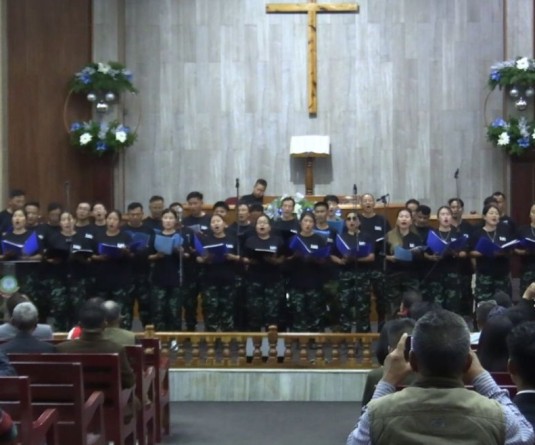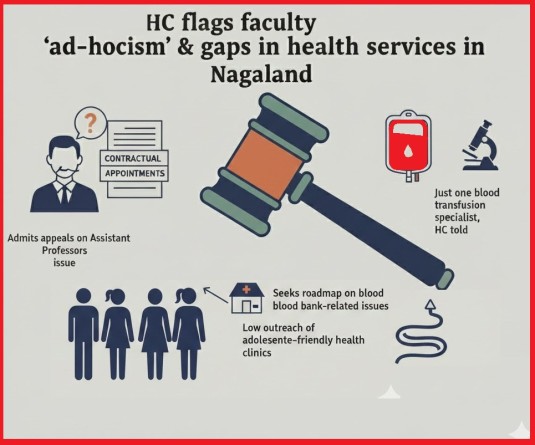
Morung Express
Dimapur | January 16
The third Annual Status of Education Report, ASER 2007, was released by Mr. Montek Singh Ahluwalia, Deputy Chairman of the Planning Commission, in New Delhi today. This report says that 4.2% of children in the 6-14 age-group are not going to school in rural India, down from 6.6% in 2006. However, it also estimates that the children’s attendance in schools has not improved over the last two years with only about 74% of the children on the school roster attending classes on the day of the visit.
ASER is a household survey in which children are interviewed and assessed at home on a weekend. The volunteers also visit a government school in the sampled village on a working day. This year, ASER volunteers met over 720,000 children in the 3-16 age-group and visited over 16,000 villages and 13,200 schools throughout the country. This effort, facilitated by Pratham, is carried out by over 500 organizations including NGOs, colleges and universities across India. This year ASER covered nearly 570 districts.
School provisioning
This report has several indications of the proverbial glass of universal elementary education being half full or half empty. The proportion of rural schools (Std 1-4/5) where mid-day meals are served has increased significantly from 71.1% in 2005 to 92.6% in 2007. However, the report also reveals that over 40% teachers in 2007 have yet to receive the government grant of Rs. 500 that each teacher is supposed to receive towards the beginning of the academic year (the survey took place around October and November 2007). Availability of useable water and toilet facilities in schools has improved; yet 28% rural schools do not have useable water facilities and 45% rural schools do not have usable toilets.
Government school children accessing paid tuition classes
One of the major new findings of ASER 2007 is that the proportion of government school children who go to paid tuition classes is about 20%. While, in the early years of schooling, a higher proportion of private school children take up tuition classes; from Std 5 onwards, the incidence of tuition for both government school and private school children converge to around 25%.
States with the highest incidence of tuition amongst government school children in Std 5 are West Bengal (83.3%), Orissa (50.9%), Bihar (42.3%), Kerala (36.8%) and Goa (31.8%). On the other hand, states with less than 5% incidence of tuition amongst government school children in Std 5 are Chattisgarh, Rajasthan, Uttarakhand, and Himachal Pradesh.
Trends in learning in rural India
ASER has been testing children for their reading and math ability since 2005. In 2007, the proportion of children who cannot even read alphabets in Std 1-2 has dropped by 5 percentage points (From 26.9% in 2006 to 21.8% in 2007). However, it is still a matter of concern that over 40% children in Std II cannot even read simple words and about the same proportion of children in Std II cannot recognize numbers beyond 10. While there has been some improvement in basic reading in many states, only a few states show progress in reading at a higher level. Himachal Pradesh, Andhra Pradesh, Punjab, Nagaland, Maharashtra are some states where a significant increase has been observed in the proportion of Std 5 children who can read at least a Std 2 level text.
Math learning continues to provide bad news: only 42% children in Std V can divide a three digit number by a one digit number. This is almost exactly the same percentage of children in Std III who can subtract, indicating that about 58% of India’s children are not getting even basic math education.
First estimates of English reading ability in Rural India ASER 2007 provides the first-ever estimate on English reading ability amongst rural India’s children. In Std 5, 28% of the children can read simple sentences and 31% can read words. Of these children, two-thirds can also tell the meaning of what they have read. In Kerala, over 59% of the children can read simple sentences in English. From the Hindi-speaking belt, Himachal Pradesh matches Kerala in English reading ability while Haryana and Bihar also perform relatively well with 47.9% and 41.2% children in Std 5 being able to read English sentences. Most states start English teaching in early grades.
Need for Early Childhood education
Various government documents and experts have always stressed the importance of early childhood education. ASER 2007 reports that 75 to 80% of the 3-4 year olds are now accessing aanganwadi (pre-school). However, at the same time, the proportion of 5 year olds who enter formal school is 62% in 2007, up by 15 percentage points over last year. Experts feel that these children are too young to be in school and need a proper kindergarten to ease them into formal education.
The glass is getting filled up, but slowly. There is a need to quicken the pace to meet the 2010-deadline of Universalisation of Elementary Education in India.
For more information, please contact Ronald Abraham (+91 9818715553) or email us at
aser@pratham.org. A copy of the report can be downloaded from www.pratham.org.


.jpg)



